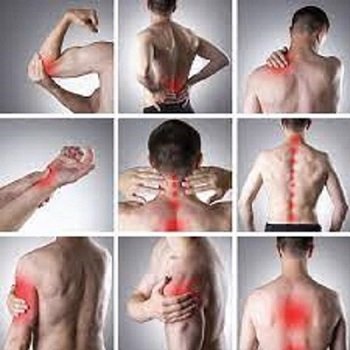Understanding the Benefits of Muscle Relaxation in Physical Therapy
muscle relaxation

Muscle relaxation techniques are integral to the field of physical therapy, offering profound benefits in the rehabilitation and recovery process. Whether recovering from injury, managing chronic conditions, or enhancing athletic performance, understanding the importance of muscle relaxation can significantly impact treatment outcomes. This article explores the various benefits of muscle relaxation in physical therapy and how these techniques aid in promoting healing, restoring function, and improving overall quality of life.
Role of Muscle Relaxation in Physical Therapy
Muscle relaxation plays a crucial role in physical therapy by:
-
Reducing Muscle Tension: Chronic muscle tension can contribute to pain and impair movement. Relaxation techniques help alleviate tension, improving muscle flexibility and reducing discomfort.
-
Promoting Circulation: Enhanced blood flow to muscles accelerates healing by delivering oxygen and nutrients, essential for tissue repair and recovery.
-
Facilitating Pain Management: Relaxation techniques such as progressive muscle relaxation (PMR) and breathing exercises help manage pain by reducing muscle spasms and lowering pain perception.
Benefits of Muscle Relaxation Techniques
1. Improved Range of Motion
Muscle relaxation techniques, including stretching and massage therapy, enhance flexibility and joint mobility. This is crucial for patients recovering from injuries or surgeries, as it aids in restoring normal movement patterns and preventing stiffness.
2. Enhanced Recovery from Injury
After injury or surgery, muscles often become tense and weak. Incorporating relaxation techniques into physical therapy sessions helps speed up recovery by promoting muscle relaxation, reducing scar tissue formation, and improving overall tissue elasticity.
3. Stress Reduction and Mental Well-being
Physical therapy can be physically and emotionally demanding. Muscle relaxation techniques not only alleviate physical symptoms but also promote relaxation and reduce stress levels, enhancing overall mental well-being during the rehabilitation process.
4. Complementary Treatment for Chronic Conditions
For individuals with chronic pain conditions such as fibromyalgia or arthritis, muscle relaxation techniques provide non-pharmacological pain management strategies. Regular practice helps manage pain symptoms and improves daily functioning.
Effective Muscle Relaxation Methods in Physical Therapy
- Progressive Muscle Relaxation (PMR): Sequentially tensing and relaxing muscle groups to promote awareness and relaxation.
- Massage Therapy: Techniques such as Swedish massage or myofascial release to alleviate muscle tension and improve circulation.
- Yoga and Stretching: Incorporating gentle yoga poses and stretching routines to improve flexibility, reduce stiffness, and enhance relaxation.
- Breathing Exercises: Deep breathing techniques to promote relaxation, reduce stress, and enhance oxygenation of tissues.
Integrating Muscle Relaxation into Physical Therapy Programs
Physical therapists integrate muscle relaxation techniques into customized treatment plans based on individual needs and goals. This holistic approach addresses not only physical impairments but also promotes overall well-being and functional recovery.
Conclusion
Understanding the benefits of muscle relaxation techniques in physical therapy underscores their importance in rehabilitation and recovery. From reducing muscle tension and enhancing range of motion to managing pain and improving mental well-being, these techniques offer comprehensive benefits for patients undergoing physical therapy. By incorporating muscle relaxation into treatment plans, physical therapists empower patients to achieve optimal outcomes and regain function effectively.
What's Your Reaction?











![Wireless Connectivity Software Market Size, Share | Statistics [2032]](https://handyclassified.com/uploads/images/202404/image_100x75_661f3be896033.jpg)



